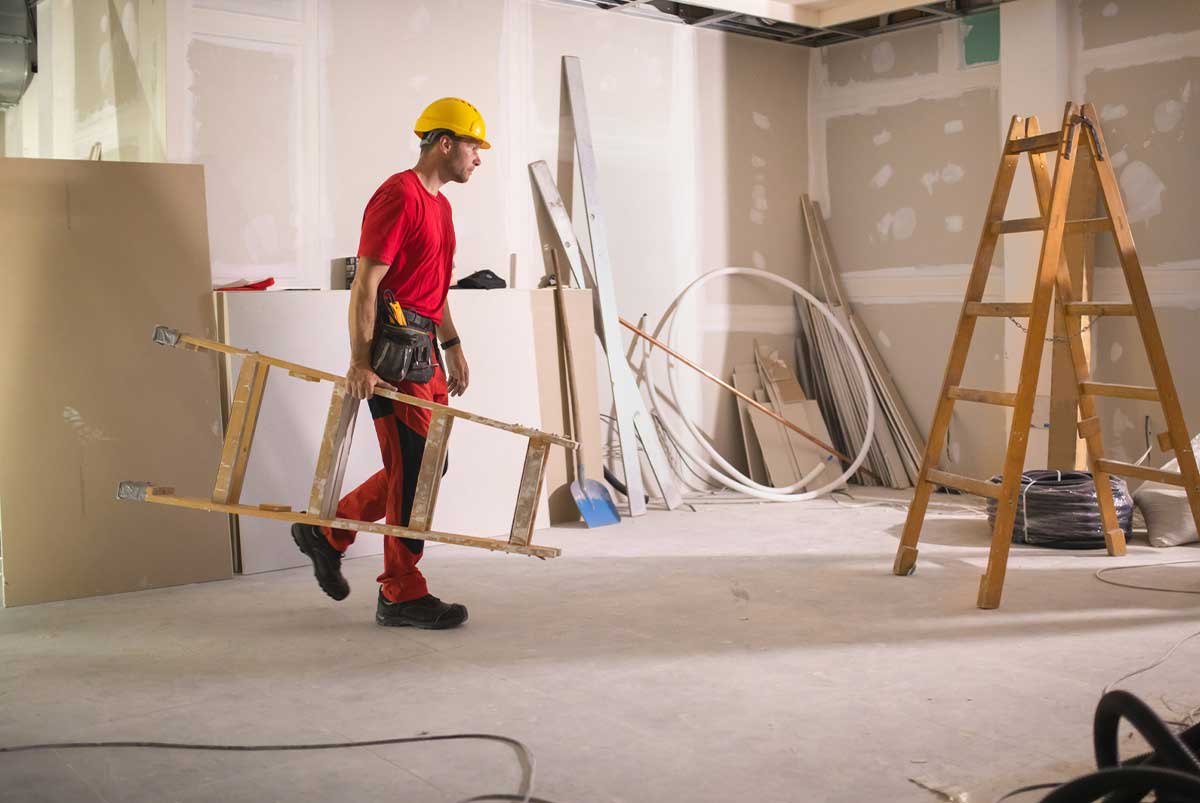Ready To Buy a Home?
Get Approved to Buy a Home
Rocket Mortgage® lets you get to house hunting sooner.
For some home buyers, the existing pool of homes doesn’t meet all their wants or needs. Maybe your must-haves require building the home of your dreams from the ground up. Maybe life in the city has lost its shine, and you want to build a home in a quieter area.
It may also be the case that you’ve crunched the numbers and figured out that you could save money building your own home.
But that home won’t build itself or finance itself. You’ll need a new-construction loan or home building loan to cover the cost of buying the land and building the home.
Once construction is done, you’ll probably need to refinance the new-construction loan into a mortgage loan.
The steps you’ll take to refinance the loan will depend on the construction loan you chose. There are five types of loans:
- Construction-to-permanent loans
- Construction-only loans
- Owner-builder construction loans
- Renovation loans
- Government-backed construction loans
But before we dig into each loan type and how to refinance them, let’s dig into how construction loans work.
How Do Construction Loans Work?
Unlike standard mortgage loans, which let you pay back the loan over 10 – 30 years, construction loans are short-term loans that must be repaid after construction, which usually takes 1 – 2 years.
Because the home doesn’t exist yet, you can’t use the home as collateral (like you would with a standard mortgage). And because of other variables – like qualifying for permits and keeping builders on schedule – construction loans are considered higher-risk loans. To get one, you’d need a higher credit score than you’d need to qualify for a standard mortgage, and you’d have to make a 20% – 25% down payment.
If you can’t pay the entire loan back after the construction is done, you’ll need to refinance the loan into a standard mortgage loan or “end loan.”
Refinancing from a building loan to an end loan looks a little different for each type of construction loan.
Construction-to-Permanent Loan
Once construction is completed, a construction-to-permanent loan automatically refinances into a permanent mortgage with the same lender. The loan that financed the construction will convert into a mortgage.
Construction-to-permanent loans operate as one loan – not two separate loans. They’re known as one-time close loans because you submit one loan application for the construction loan and the mortgage loan and attend one closing for both. This cuts down on time and closing costs.
When setting up a construction-to-permanent loan, nearly everything is agreed on at the start, except the mortgage interest rate.
The rate will be adjusted to current market rates when construction is over, and the loan switches over to a mortgage loan. That means the interest rate on your mortgage loan could go up or down.
If the new mortgage interest rate is too high, you don’t have to stay with your lender after the construction loan term ends. You can search for a better rate and refinance with another lender for the end loan.
If you’re planning to refinance a construction-to-permanent loan with a new lender, take closing costs and lender fees into consideration. You’ll end up paying those twice if you switch lenders.
Construction-Only Loan
A construction-only loan is a short-term, unsecured loan that only covers the cost of construction. Once construction is completed, the loan has to be fully repaid or refinanced into a permanent mortgage.
While you can convert to an end loan with your existing lender, it’s a good idea to check out other lenders. Treat this stage as though you’re looking for a new loan because, essentially, you are.
Refinancing a construction-only loan to a different lender is simpler than refinancing a construction-to-permanent loan with a new lender because there’s no existing mortgage to exit from. But you’ll still have to put in the work to find a new mortgage lender and renegotiate a new mortgage.
Government-Backed Construction Loan
The federal government backs construction loans through the Federal Housing Administration (FHA), the Department of Veterans Affairs (VA) and the U.S. Department of Agriculture (USDA).
- FHA loans target first-time home buyers or buyers with past credit issues.
- VA loans can help qualified veterans, active duty service members and qualified surviving spouses get financing to build a home.
- USDA loans can help buyers build homes in designated rural areas.
You can take out a government-backed construction-to-permanent loan or a construction-only loan. When it comes to refinancing these loans, you’ve got two options:
- Refinance with the same federal agency: Refinancing through the same agency can help you change the loan type or potentially get a lower interest rate. Some government-backed loans offer streamlined refinancing options that make it easier to refinance your loan.
- Refinance to a conventional mortgage: While conventional mortgages may come with different interest rates and higher credit score requirements, you may benefit from not having to pay for mortgage insurance premiums (MIPs) for the life of the loan.
Owner-Builder Construction Loan
Owner-builder construction loans can be construction-to-permanent loans, construction-only loans or government-backed loans. And they come with a few unique features.
An owner-builder loan is for the professionally licensed and skilled among us who want to act as their own contractor and oversee construction.
Even if you qualify for the loan, you’ll be expected to work with a building inspector who will certify each construction milestone to trigger a new draw.
Refinancing to an end loan with an owner-builder construction loan is fairly straightforward. You’ll need to compare lenders and look at market interest rates to find the best end loan for you.
Renovation Loan
Renovation loans are often categorized as construction loans, even though they’re used to renovate or repair an existing home rather than build a new home from the ground up.
Which renovation loan you get will depend on who’s doing the renovations.
If you’re planning to do the renovations yourself, the loan will be similar to an owner-builder loan. If you’re hiring a contractor, it will be similar to the standard construction loans.
You refinance renovation loans the way you would any other loan. Compare your current lender’s interest rates with market interest rates and decide whether it makes sense to refinance with your current lender or to choose a new lender.
Refinancing Tips
Whether you’re refinancing a construction-to-permanent loan, construction-only loan, owner-builder construction loan, renovation loan or government-backed construction loan, be sure to:
- Compare construction loan interest rates from multiple lenders
- Factor in lender fees and closing costs
- Know how much the mortgage insurance premium (MIP) will cost if you’re going to refinance a government-backed loan
- Find out if there are any limits on how much you can borrow against your home equity in the future
Take your time to interview loan officers and review lender estimates before you apply for refinancing.
And be mindful about taking on new debt during the construction phase.
Because the building process may take a while (typically 18 – 24 months), your credit score can change from when you first applied for the construction loan to when you decide to refinance to an end loan.
End Loans for the Win
Refinancing your construction loan is a great strategy to get a lower interest rate on your end loan. Shop around for mortgage rates during the final phases of construction so you’re ready to refinance when the final nail has been hammered and the last screw has been tightened.
Happy home building!
Should you refinance?
Enough hypotheticals – our partners will give you expert recommendations, along with real interest rates and payments
The Short Version
- Construction loans help borrowers finance building a new home, but they need to be refinanced into mortgage loans when the building phase is completed
- Construction-to-permanent loans automatically refinance from a construction loan to a mortgage with the same lender
- Construction-only loans need to be refinanced once a home is built




